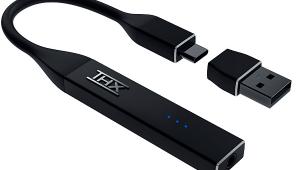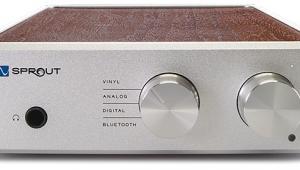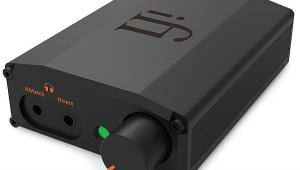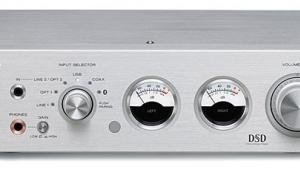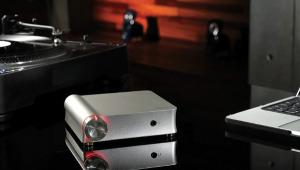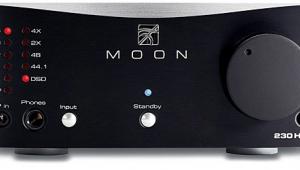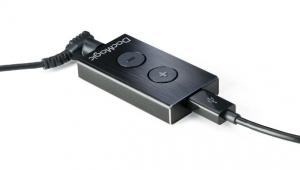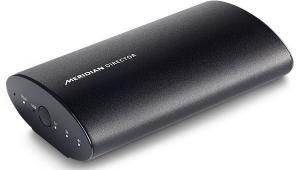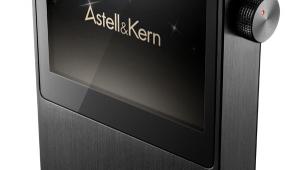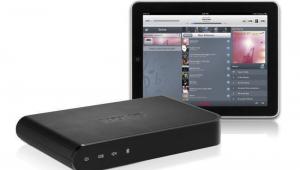Yamaha RX-A3020 A/V Receiver Page 4
Measurements
DOLBY DIGITAL PERFORMANCE
All data were obtained from various test DVDs using 16-bit dithered test signals, which set limits on measured distortion and noise performance. Reference input level is –20 dBFS, and reference output is 1 watt into 8 ohms. Volume setting for reference level was –7. All level trims at zero; except for subwoofer-related tests, all speakers were set to “large,” subwoofer on. All are worst-case figures where applicable.
Output at clipping (1 kHz into 8/4 ohms)
1 channel driven: 194/275 W (22.9/24.4 dBW)
5 channels driven (8 ohms): 69 W (18.4 dBW)
7 channels driven (8 ohms): 63 W (18.0 dBW)
Distortion at 1 watt (THD+N, 1 kHz)
8/4 ohms: 0.02/0.02%
Noise level (A-wtd): –75.2 dB
Excess noise (with sine tone)
16-bit (EN16): 0.1 dB
Frequency response: 20 Hz to 20 kHz +0, –0.1 dB
MULTICHANNEL PERFORMANCE, ANALOG INPUT
Reference input and output level is 200 mV; volume setting for reference output level was –5.
Distortion (THD+N, 1 kHz, 8 ohms): 0.02%
Noise level (A-wtd): –93.8
Frequency response: <10 Hz to >160 kHz +0, –3 dB
STEREO PERFORMANCE, DIGITAL INPUT
Reference level is –20 dBFS; all level trims at zero. Volume setting for reference level was –5.
Output at clipping (1 kHz, 8/4 ohms, both channels driven): 162/258 W (22.1 /24.1 dBW)
Distortion at reference level: 0.02%
Linearity error (at –90 dBFS): 0.0 dB
Noise level (A-wtd): –75.4 dB
with 96-kHz/24-bit signals: –90.7 dB
Excess noise (with/without sine tone)
16-bit (EN16): 0.2/0.2 dB
quasi-20-bit (EN20): 7.0/5.9 dB
Noise modulation: 0.2 dB
Frequency response: <10 Hz to 20 kHz +0, –0.05 dB
with 96-kHz/24-bit signals: <10 Hz to 44 kHz +0, –0.5 dB
BASS-MANAGEMENT PERFORMANCE
Measured results obtained with Dolby Digital test signals.
Subwoofer-output frequency response (crossover set to 80 Hz): 24 dB/octave above –6-dB rolloff point of 80 Hz
High-pass-filter frequency response (crossover set to 80 Hz): 12 dB/octave below –3-dB rolloff point of 80 Hz
Maximum unclipped subwoofer output (trim at 0): 7.2v
Subwoofer distortion (from 6-channel, 30-Hz, 0-dBFS signal; subwoofer trim set to 0): 0.03%
Crossover consistency: bass crossover frequency and slope were consistent for all sources and formats.
Speaker size selection: all channels can be set to “small”
Speaker distance compensation: available for all main channels.
The Yamaha RX-A3020 measured almost identically to the earlier, RX-A2010 model we reviewed in the January 2012 issue; in fact, the hardware essentials may well be entirely the same. Power delivery was comfortably above Yamaha’s 150-watt spec (just 10 watts more than the earlier model’s) and stayed north of 60 watts even with 7 channels driven, the maximum we’re equipped to measure simultaneously. Noise, distortion, and linearity were all world-class, about as near you can come to the theoretical limits of our dithered-signal real-world tests. If you’re looking for an A/V receiver with better test-bench performance, don’t, because you won’t find it.
- Log in or register to post comments
